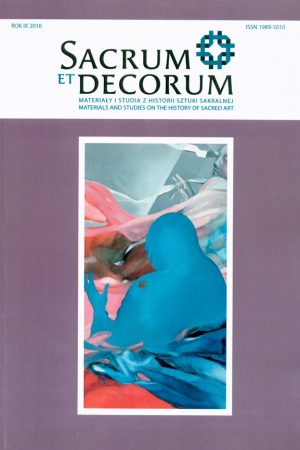Adam Stalony-Dobrzański’s projects and stained-glass windows for Warsaw Orthodox parishes
Keywords:
Adam Stalony-Dobrzański; Warsaw; Poland; sacred art; stained glass; Orthodox church; OrthodoxyAbstract
Adam Stalony-Dobrzański (1904–1985), a graduate and lecturer of the Academy of Fine Arts in Cracow was one of the leading creators of contemporary Orthodox art in Poland. Creating comprehensive concepts of interior designs of Polish churches, the artist introduced, inter alia, stained-glass windows into their space. Many of these windows were designed for churches and buildings belonging to the Orthodox Church in Warsaw. They are described in this article, with special attention being paid to their history and iconography. The oldest stained glass window is Deesis, created in 1956 for the lower chapel of the Orthodox Church of St John Climacus in Wola. It was only in the late 1970s and beginning of the 1980s that glazing for the upper chapel according to Stalony-Dobrzański’s designs was manufactured. In 1968 Stalony-Dobrzański was invited to participate in a competition for the renovation project of the Metropolitan Council of the Holy Equal to Apostles of Mary Magdalene in Warsaw. However, his project, elaborated in co-operation with Jerzy Nowosielski, Boris Oleszko and Sotyris Pantopulos, was not realised. Currently, in the church there is only one stained glass window designed by Stalony-Dobrzański, i.e. Mary Magdalene meets the Resurrected Christ (1976). In the 1970s Stalony-Dobrzański designed stained-glass windows for the House of the Metropolitan of the Polish Autocephalous Orthodox Church (the collection is currently scattered), and in the next decade – also for the Museum Of Warsaw Orthodox Metropolis (projects were not realised).Downloads
Downloads
Published
How to Cite
Issue
Section
License
Copyright (c) 2016 Sacrum et Decorum

This work is licensed under a Creative Commons Attribution-NonCommercial-NoDerivatives 4.0 International License.
In line with the Open Access policy, authors retain full copyright to their articles – without restrictions.
Authors can deposit their articles in a repository of their choice.


